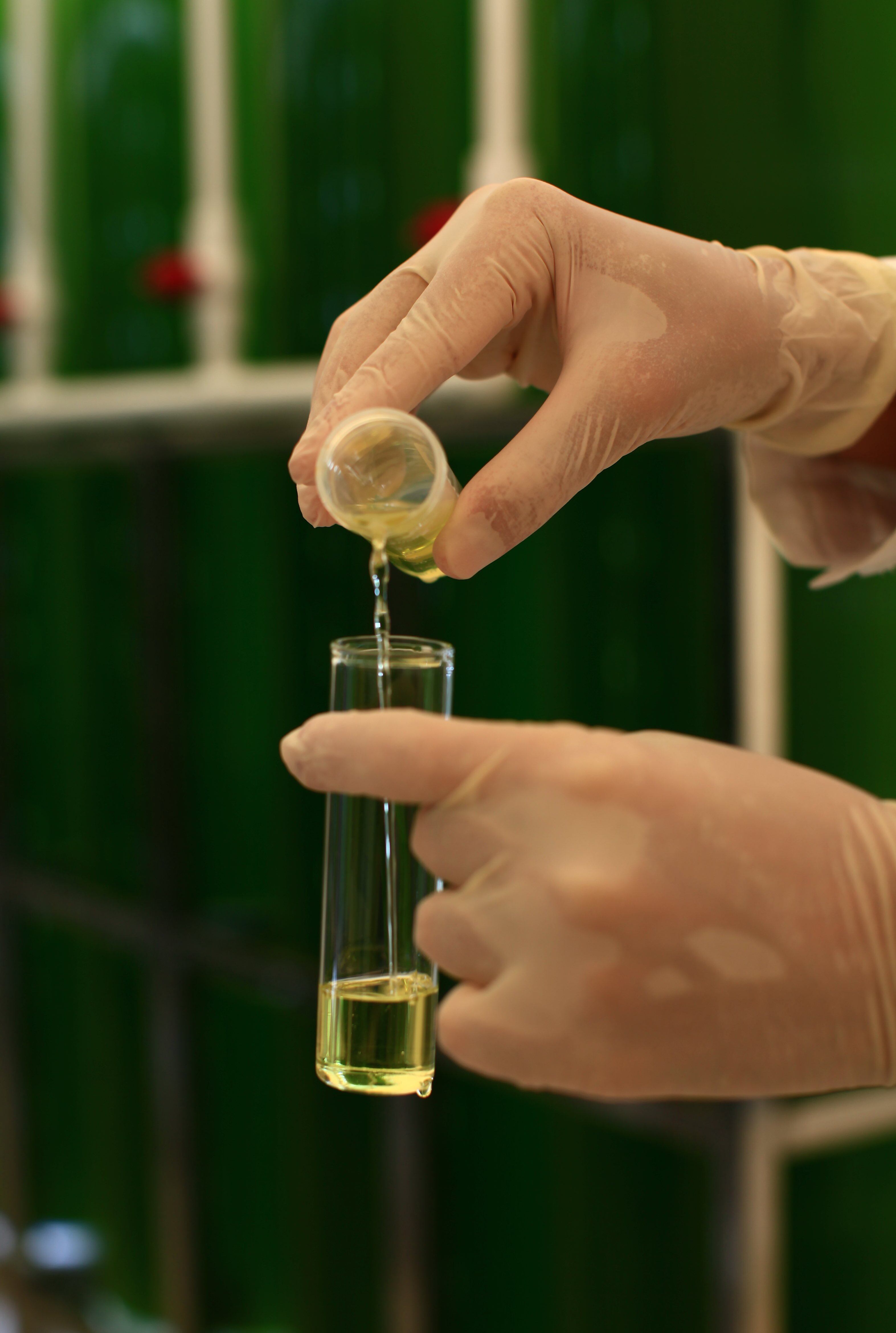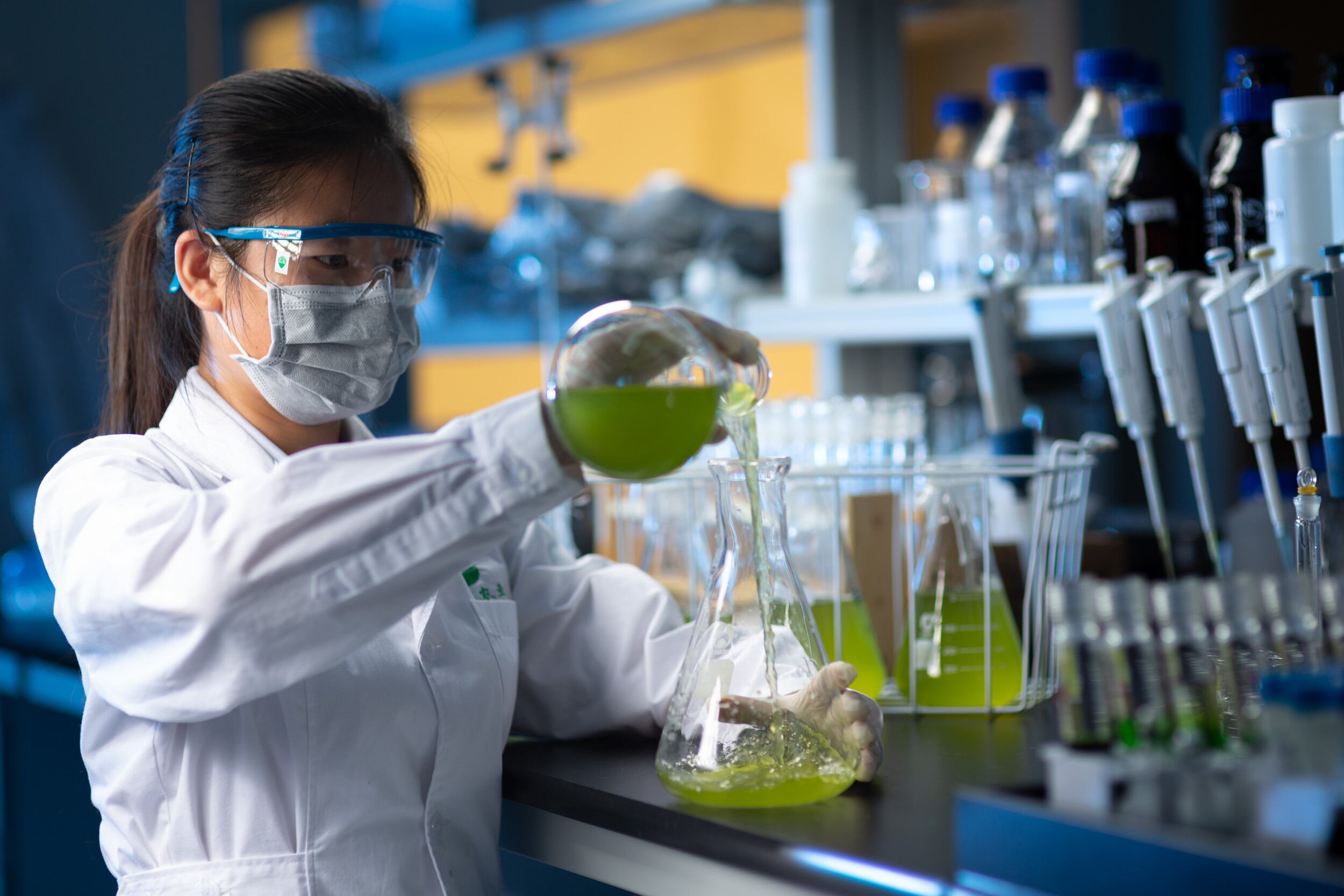Company founder Wei Yu, PhD became acquainted with the possibilities of algae cultivation during his studies at UCLA, acccording to Greg Remy, vice president of sales. Dr. Yu's first idea was to commercialize an algae strain for cosmetic ingredients.
“At first the interest was in pursuing a microalgae derived cosmeceutical ingredient, but that algae was a particularly slow growing species which at that time was discouraging,” Remy told NutraIngredients-USA.
CO2 from power plant
Yu founded Lyxia in Culver City, CA and later founded the Chinese arm of the company, called Shenzhen Qianhai Xiaozao Technology Ltd. in Shenzhen.
The company searched for a site for a pilot scale facility and settled on a seaside location on China’s south coast. A big advantage of the site, beyond the favorable terms offered by the local government, is access to CO2 from a nearby power plant to fuel the algal growth in the company’s open ponds.
“We had broken ground on a facility on the South China Sea about 20 kilometers from the border with Vietnam. That started to produce material for samples this year,” Remy said.
As the company scales up, it will proceed cautiously to try to meet the broad demand for the new products without imperiling customer relationships by being out of stock.
“Any one of our customers could consume all of our production,” Remy said. “What we are going to do is to divvy it up to allow people to get started on their formulation work.”
The company is in the midst of a massive expansion at the seaside site. That will include commercial scale production by mid 2019 and full capacity by 2020.
“By 2020 we will have expanded our capacity by almost 100 fold,” Remy said.
Technical tweaks boost efficiency
The new facility will incorporate some technical tweaks that will make the extraction process far more efficient, Remy said, which will help both increase capacity and keep the cost down.
"When ready to harvest, the standard method of isolating and concentrating the algae has been flocculation. That was not efficient enough for us time-wise, so we went with a centrifugation technology that also yields a cleaner product. Similarly, where other producers have used drum drying of the washed algae, Lyxia chose to go another route with spray drying," he said.

Next, a downstream ethanol-based lipid extraction process isolates the oils and other ingredients leaving a protein-rich algal powder behind. We then further concentrate the extracted oils in preparation to go several ways, one being transesterification to isolate our EPA ethyl ester. Remy said this produces an almost odorless, light colored oil and in a concentration as high as 55% EPA-EE.
Other oils from Nannochloropsis that are on the market are offered in a more native form including EPA in triglyceride and polar forms with carotenoids and other nutrients. That rich mixture is also a bit richer in aroma and taste notes. Lyxia will offer this native form EPA as well.
“I’m a marketing guy, so I would say the native form product has more of a marine essence to it," he said.
Purity forms base of drug development
The purity that Lyxia can achieve has interested pharmaceutical companies in Japan and elsewhere, with desire to further concentrate our EPA up to as high as 98%, Remy said.
The algal origin of Lyxia’s EPA in conjunction with its purity has drawn companies interested in blends. To that end, Lyxia will be offering its EPA ingredient in blended from with a DHA from Schizochytrium algae produced by a Chinese partner. That technology has been on the market for decades, starting with the first Martek patents.
“By January we will be producing two to three metric tons a month of our EPA ingredient,” Remy said. “We are working with third party organizations in preparing our Independent GRAS Conclusions and our Novel Food application for the EU. If things go really swiftly, we could have GRAS by June.”

